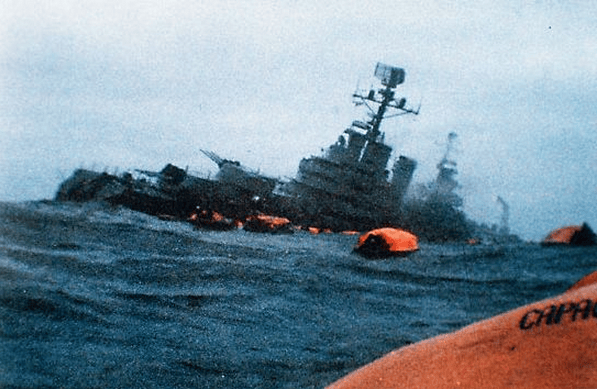ARA General Belgrano sinking: when did ship sink during Falklands war, how many died, and when is anniversary?
and live on Freeview channel 276
This month marks the 40th anniversary of the sinking of the ARA General Belgrano ship during the Falklands War.
The Argentine cruiser was shot by a British naval submarine on 2 May 1982, resulting in the deaths of 323 people and prompting an escalation of hostilities.
Advertisement
Hide AdAdvertisement
Hide AdThe 10-week military conflict fought between Britain and Argentina over the Falkland Islands and the South Georgia and the South Sandwich Islands began on 2 April 1982, with the sinking of the ship taking place one month into the conflict.
So what exactly happened, who were the victims, and what was the aftermath? Here is everything you need to know about the sinking of the Belgrano.
When did the Falklands war start, and why?
The Falklands War began on April 2 1982, just over 40 years ago.
There had long been a dispute between Britain and Argentina over the sovereignty of the Falkland Islands.
Advertisement
Hide AdAdvertisement
Hide AdBritain maintained that it owned the Islands, the site of a British colony since 1841, while the Argentinian government asserted that the Islands were Argentinian territory.
Argentina invaded the Falklands in April 1982, with the British Navy retaliating a few days later.
The conflict lasted for 74 days – a little over 10 weeks – and ended with Argentinian surrender and the return of the Islands to British control.
Why was the Belgrano attacked?


On April 12, the British Navy established an MEZ, or Maritime Exclusion Zone, around the Falkland Islands.
Advertisement
Hide AdAdvertisement
Hide AdThis meant that any Argentinian ship entering that area would be fired upon.
On April 30, this was intensified to a Total Exclusion Zone – meaning Britain warned that any ship, from any nation, would be attacked.
Both of these actions were dubiously legal – the Law of the Sea Convention made no provisions for such zones – but were respected by the international community of neutral nations nonetheless.
In early May, British intelligence intercepted an internal Argentinian communication with plans to prepare for an attack.
Advertisement
Hide AdAdvertisement
Hide AdIn response, Prime Minister Margaret Thatcher agreed to requests from her Chief of Defence Staff to approve an attack on a ship outside the Total Exclusion Zone.
The British submarine Conqueror fired upon the Belgrano, hitting it with two torpedos (a third was fired but missed).
How many people died?
323 people were killed in the attack: 321 members of the ship’s crew and two civilians who were on board at the time.
This was the largest number of casualties recorded in a single day during the Falklands war, accounting for a little under half of the total losses suffered by Argentina during the full 10-week period.
Advertisement
Hide AdAdvertisement
Hide AdIt was initially believed that over a thousand people died. 772 men were rescued by Argentine and Chilean ships in the three days after the attack.
Was the sinking of the Belgrano a war crime?
There is some debate as to whether the sinking of the Belgrano constitutes a war crime.
Anti-imperialist Labour MP Tam Dalyell was a staunch critic of Britain’s actions in the Falklands.
In 1985, a senior civil servant leaked documents to Dalyell revealing that the Belgrano had not only been outside the already dubiously legal exclusion zone, but had also been sailing away from it when it was fired upon.
Advertisement
Hide AdAdvertisement
Hide AdIn 2012, then-President of Argentina Cristina Fernández de Kirchner referred to the sinking of the Belgrano as a “war crime”, though that’s not a view officially held by Argentina’s Navy.
Interestingly, the Captain of the Belgrano Hector Bonzo – who survived the attack, dying in 2009 of a heart attack at 76 – maintained that the attack was not a war crime.
He argued in 2007 that the Conqueror’s actions were “absolutely not a war crime. It was an act of war, lamentably legal.”
The families of the sailors killed attempted to sue the British Government in the European Court of Human Rights in 2000, though the suit was ruled inadmissible due to the length of time that had passed since the attack.
Comment Guidelines
National World encourages reader discussion on our stories. User feedback, insights and back-and-forth exchanges add a rich layer of context to reporting. Please review our Community Guidelines before commenting.
